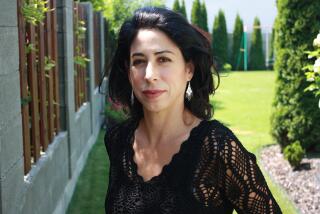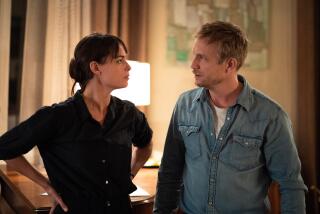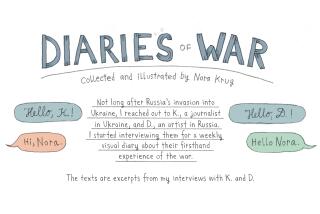Rutu Modan’s graphic novel ‘The Property’ journeys through the past
A curious double — or is it triple? — vision marks Rutu Modan’s graphic novel “The Property” (Drawn & Quarterly, 222 pages, $24.95), which involves a grandmother and a granddaughter on a journey through the past. Unfolding over the course of a week in Warsaw, the book traces their efforts to determine the fate of a piece of property: an apartment left behind in the lead-up to the Holocaust. It’s a situation complicated by a variety of competing agendas, which is not uncommon when it comes to family.
Modan makes this explicit from the outset with an epigraph — “With family, you don’t have to tell the whole truth and it’s not considered lying” — credited to her mother, Michaela Modan. It’s a telling comment, and not just for what it says about family, but also about the graphic novel, which is, by its nature, an art of reconstruction, of invention, relying as it does on hand-drawn images to masquerade as windows onto the recognizable landscape of daily life.
Such a tension becomes more overt the more autobiographical the project: I think of Art Spiegelman’s “Maus,” progenitor of every comic ever written about the Holocaust, which willfully confronts the contradictions of form (and history) by rendering Jews as mice and Germans as cats, a metaphor that grows increasingly effective the more the author breaks it down. Modan doesn’t have this sort of deconstruction in mind with “The Property,” but she never forgets that her images stir proximity and distance, luring us in with a very real intimacy that, at the same time, can never offer more than an approximation of the world.
This is not to say that “The Property” is experimental — far from it, in fact. The story is as straightforward as the characters are not. The grandmother, Regina, and her granddaughter, Mica, are shadowed on their trip to Warsaw by Regina’s daughter’s fiancé, who wants to make sure any money that comes out of the visit is equally shared. In the meantime, Mica connects with a Polish tour guide and comics artist, while Regina seems less interested in the property, and her rights to it, than in revisiting another, more personal piece of her past.
The book is tightly plotted, with a twist (or two) that feels entirely organic to the movement of the narrative. Modan is masterful at creating complex motivations, exploring the confusion her characters create in each other and, more fundamentally, in themselves.
Shortly after arriving in Warsaw, Regina provokes a fight with Mica for what appears to be no reason, although, we later come to realize, it’s part of an elaborate ruse. I don’t want to give anything away here, but let’s just say it all circles back to that epigraph, and the secrets we keep from those we love most and who love us — which is, of course, the key complication of family.
As for Modan, she knows the territory; born and raised in Tel Aviv, she is also the author of the 2007 graphic novel “Exit Wounds,” which brings a similarly complex, and personal, perspective to the aftermath of a suicide bomb. Here, the crises, the explosions, are less overt, but no less powerful for being so. The story may resolve, but the lives within it never do, bound as they are by their own history.
“It still hurts as much,” Regina tells her granddaughter late in the book. “But now it’s mixed up with other things.”
ALSO:
Judith Vanistendael’s art of dying
Miriam Katin’s graphic novel is portrait of an artist’s inner life
James Vance and Dan E. Burr’s new graphic novel goes to the circus
More to Read
Sign up for our Book Club newsletter
Get the latest news, events and more from the Los Angeles Times Book Club, and help us get L.A. reading and talking.
You may occasionally receive promotional content from the Los Angeles Times.









